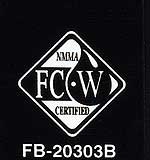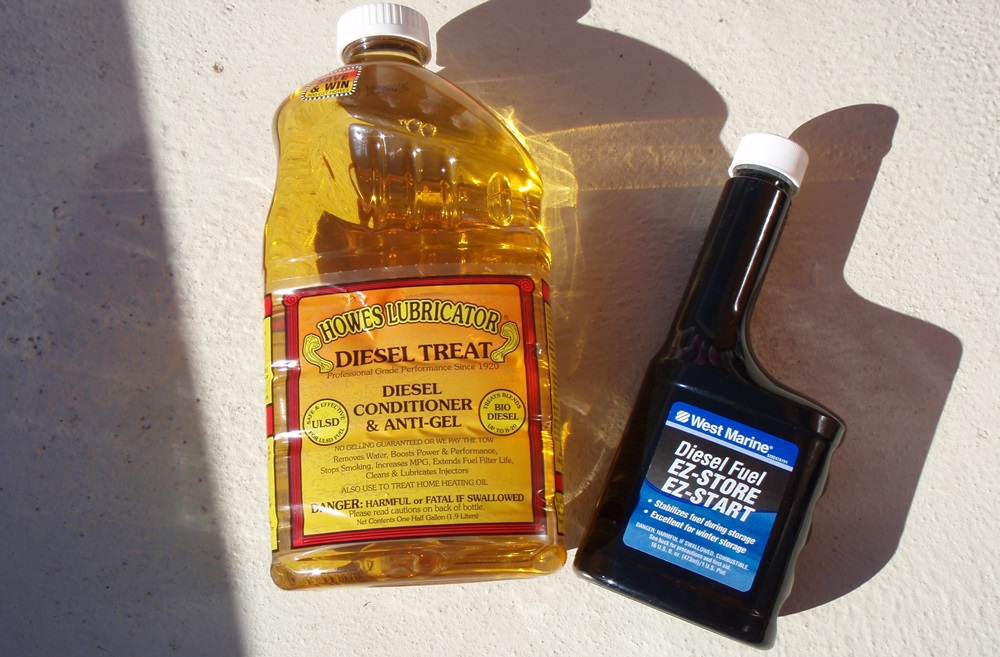Oil Analysis
Identify potential problems by analyzing your oil
Oil analysis is the easiest and cheapest way to regularly monitor the condition of your boat engines and transmissions. As part of a regular maintenance program, oil analysis allows you (or your mechanic) to identify potential engine problems before the components actually fail. You save money and time in several ways.
First, you avoid the inconvenience of an engine failure. Engines seldom break down at convenient times but, if you have ample warning that a component is failing, you can schedule repairs or replacement before a crisis occurs.
Because the repairs can be done at your choice of time and location, they will certainly be less expensive. Also, by repairing the component before it fails, you prevent damage and more costly repairs to other parts of the engine.
Oil analysis is also useful as part of a marine survey, and my surveying firm recommends that engines, transmissions and generators be tested as part of every purchase survey. Though oil analysis is intended as part of an ongoing sampling and maintenance program, a single test can still tell a great deal about the health of an engine.
Perhaps the most amazing thing about oil analysis, aside from what it can predict about your engine, is that it is so inexpensive! Most samples run about $25, although you can buy packages for multiple samples that can reduce the cost to as low as $10, depending upon the lab.
The theory behind oil analysis is that, as an engine is operated, the metal parts of the engine wear against each other in spite of the lubricants, and small particles will flake away. These remain in suspension in your oil, and can be measured for both quantity and type by the lab, which uses complex spectrographic, spectrophotometric, infrared and gas chromatographic testing. The results are fed into computers programmed by engine type and history, which then suggest suitable levels of each trace element, and note any abnormal quantities that warrant attention.
Caterpillar was one of the first companies promoting oil analysis, and their program was the result of several years of scientific testing. Engines in the field and on test beds were sampled, inspected, and sometimes run to destruction, and the results of these thousands of tests were correlated to index normal and problem wear.
If, for example, your Cat 3208 shows 20 parts per million of iron, then you're well within the acceptable range based on their previous experience. On the other hand, if you show 40 ppm of iron, you're likely to get a frantic phone call from a Cat lab technician telling you to shut your engine down immediately until you find the problem that's about to happen!
All the major engine manufacturers, such as Cat, Cummins and Detroit, offer oil analysis programs through their dealers, although until recently it has been the trucking and construction industries that have used these programs for preventive maintenance.
The procedure to set up a sampling program is virtually the same with any of the labs, and is quite simple. The first time a piece of equipment is sampled, you provide data on the manufacturer, model, lubricant types and service intervals. In addition, you'll need to provide details on the total hours on the equipment, and the number of hours since the last oil change.
Each laboratory provides the supplies you need to test your oil, including bottles and mailers for sending in the samples. Detroit Diesel, for example, has expansion bottles that suck the oil out without a pump.
The lab keeps a record of each sample and, after a few tests, can offer an analysis that takes the observed trends into account, just as a dentist always reviews your previous charts before starting his exam. When picking a lab, make sure that they have a good background in your type of equipment, and you might want to check with your local engine distributor for his recommendation. There are literally dozens of independent oil analysis companies nationwide, which can be found in your telephone directory under "Laboratories, Testing".
Each lab varies in the tests they perform, but there are certain basic tests that should be included. The first group is physical data: viscosity of the lubricant and the presence of water, fuel, dirt and other solids in the oil. A lubricant diluted by water or antifreeze solution indicates that coolant is leaking into the oil, usually from a blown head gasket or cracked head.
The second test group is an analysis for engine wear metals such as iron, chromium, lead, tin, copper and others. These wear metals are normally present but, if the concentration in one or several areas suddenly increases, the lab will suggest potential problem areas for corrective action.
For example, lead and tin are found as a result of normal crankcase bearing wear but, if higher percentages than normal are found, it suggests that the bearings are being worn from overloading. This may indicate the engine is being lugged, the lubricating properties of the oil are insufficient, or the oil pump is not delivering full pressure.
By the same token, a high copper content suggests problems with connecting rod bearings at the small end, and an abnormal amount of chromium and iron points to a broken ring allowing the piston (chromium) to scuff against the engine bore (iron).
The third type of testing will be for oil additives that, when compared to the type and brand of oil you are using, can alert you to premature depletion of the additive properties. Dispersants keep soot suspended safely in the oil to reduce sludge, buffers neutralize the acids that can quickly corrode engine surfaces, and detergents prevent the deposit build-ups on engine parts. An early deterioration of additives due to high sulfur fuels, for example, might lead to a recommendation for a shorter time between oil changes.
To judge the accuracy and repeatability of oil analysis, we pulled four identical samples at the same time from my boat engine (a two cylinder Universal diesel) and sent the samples to four different laboratories. As you would expect, the actual level of service differs widely from the "few days" that most labs promise. One of the four labs took 20 days to return the test results, while the two fastest labs took 10 days. By the way, all of the labs will provide results by phone if you request that service, and most will call if they find a problem of major proportions.
Note that when choosing a lab, be sure to ask what their samples include, since there is no set standard for what an oil analysis will include.
Analysis errors can occur. A service bulletin from Mobil Oil directed to owners of Detroit Diesel engines clearly points out, "Never tear down an engine based solely on the analysis results obtained from a single used oil sample. It is ... prudent to obtain another oil sample from the suspected distressed unit for analysis."
We sent samples to Caterpillar Oil, Dryden Oil, Analysts Inc., and CMS, Inc. Results of the latter three were approximately the same. The Caterpillar results varied substantially, but we couldn't get a satisfactory answer as to why this was the case. Dryden, Analysts Inc. and CMS, Inc. agree that there is no fuel or water in the oil, and all thought the viscosity was low for the type of oil that I said was in the engine. Dryden reported the viscosity at 20 SAE and recommended that I change the oil. Analysts Inc. found more solids in the oil than the other two and their suggestion was to change both oil and filter and then resample at the normal interval. All of the labs, including Caterpillar, considered the wear materials within their range of "normal."
This all seems reasonable, since the oil had not been changed in almost a year and had about 40 hours on it. The engine has only about 160 hours and has had the oil analyzed regularly, so I would have been surprised if it had any real problems.
Not all reports are that clean, however. One of the first boats that our firm sampled during a purchase survey came back with water in the generator oil. On investigation, we found a cracked head, so that $25 sample saved the buyer more than $1,000 in repairs.
An oil sample can also be used for warranty claims. In one instance, a nearly new diesel was found to have water in the oil. The lab suggested a re-test after several hours of running, which showed even more water than before. The lab quickly called the owner, suggesting that he had a bad head gasket and that he should get warranty service. On tear-down, a defective gasket was indeed found and the engine manufacturer, presented with the lab reports, promptly replaced the bearings which were showing premature wear from the diluted lubricants.
Because oil is the lifeblood of your engine, a program of regular oil analysis can be a tremendous help in maintaining your engine. Just as a doctor can diagnose specific illnesses by analyzing a blood sample, you can keep your engine in top running order by taking oil samples on a regular basis.












